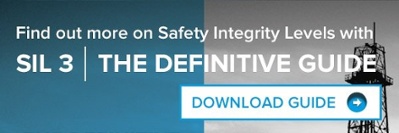Safety Relays are devices that implement safety functions. In the event of a hazard, a safety relay will work to reduce the risk within an acceptable level. When an error occurs, the safety relay will initiate a safe and reliable response. Each safety relay monitors a specific function. By connecting it to other safety relays, it is possible to achieve a total monitoring of a machine or plant. Safety relays are a simple and efficient way to meet existing safety standards, resulting in safe operations for the personnel and the equipment as well as a long service life. Risk reduction should be a priority for any business, in order to protect the employees and reduce the risk of costly accidents or equipment replacement. Generally, if a risk can be reduced, then it should be.
Some of the functions that safety relays include:
- Stopping a movement in a controlled and safe manner
- Monitoring the position of movable guards
- Interrupting a closing movement during access
- Emergency off/stop
Safety relays are simple to operate and have a clear structure. The use of safety relays has become widespread due to their compact design, high reliability, and most importantly they meet all the required standards. They have become an integral component of any new plant or machine where safety functions are necessary. A standard relay can’t be used in a Safety Instrumented Function (SIF). For this reason, whenever it is necessary to use a relay complying with IEC 61508 and the relevant industry standard (for example 61511), we must refer to a safety relay.
SIF refers to equipment designed to prevent or mitigate the risks of a specific hazard. It detects the imminence of an incident, decides to take a specific action and acts to bring the process back to a safe state.
A SIL (Safety Integrity Level) certified relay (Safety Relay) has a known and guaranteed ability to perform a given Safety Function and reach a specific safe state on demand (i.e. open a relief valve or activate a Fire Extinguishing System). The typical cases of application of a SIL certified relays are represented by a controller that can’t meet the power requirement (V or A), or when the multiplication of the contacts is required, or the controller safety function must be inverted.
SIL (Safety Integrity Level) Certified Relays are used for critical loops where careful consideration should be given to Line and Load Monitoring. In applications, such as F&G systems, line and load monitoring are fundamental, and Smart Relays become a valuable tool. Smart Relays are devices that implement the load and line diagnostics functions to the safety functions of a safety relay.
The SIL certified relays are not used exclusively in Oil & Gas or Petrochemical industries, they are also a must in many other industries like railways, cars and lift, power distribution and anytime a failure of the relay can cause a serious accident.
GM International designs, engineers and manufactures a complete range of Intrinsically Safe and SIL Certified relays. Thanks to specific contact arrangement, GM International relay modules maintain higher level of safety while improving process availability (a single fault is not enough for a spurious trip of the load).
In conclusion, you should never consider safety and availability mutually exclusive. Choosing the right SIS can ensure that your personnel and your plant are perfectly safe without you having to suffer any economic loss.


